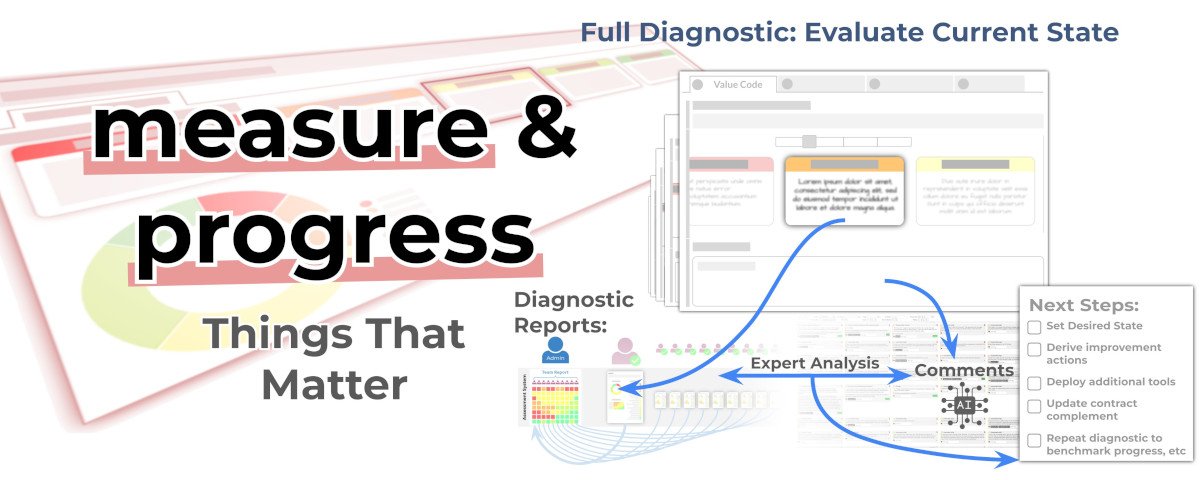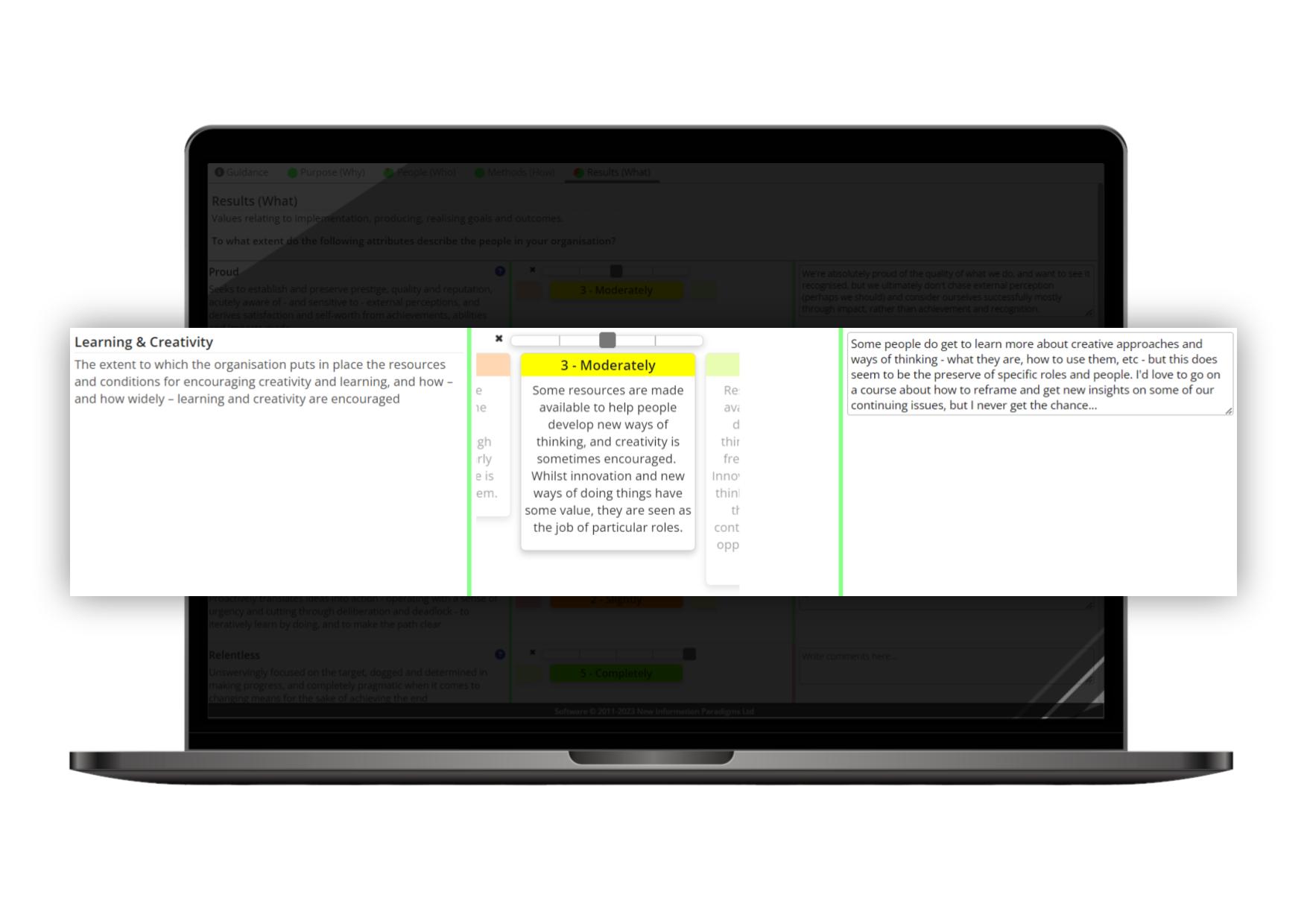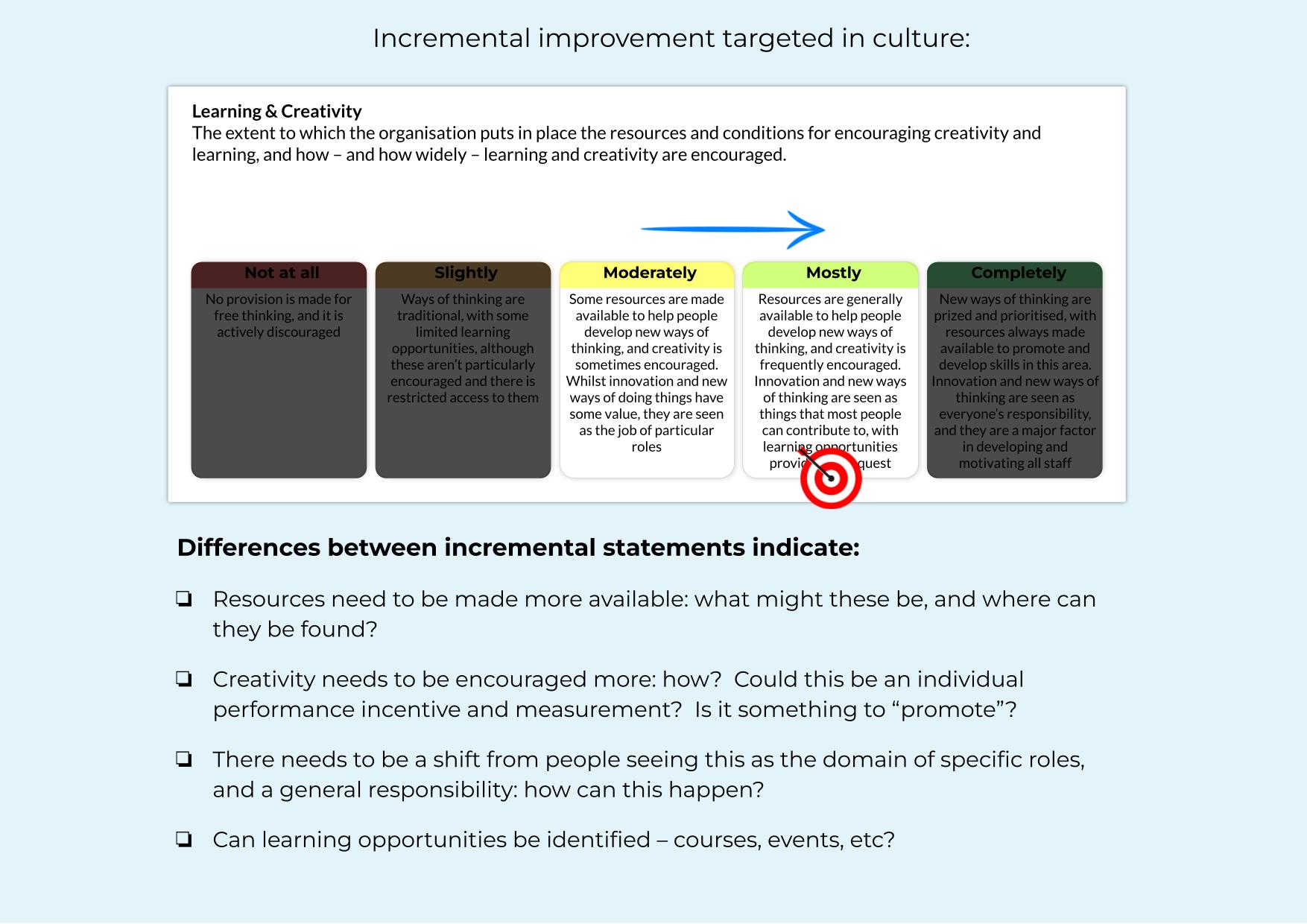Clarifying Values: Step 3
Measuring and Progressing the Things That Matter is the third of the three steps to clarifying values:
- Scope & Surface
- Capture & Refine
- Measure & Progress

What began with a broad exploration of the situation now sees tight Value Code measures of the Things That Matter, demonstrating that the subjective has been made objective, and the abstract made specific, prompting even more focused comments to explain the evaluations made and what might need to happen:
Through charts and AI analysis similar to when surfacing the Things That Matter, the current state of each Value Code is now objectively established – including by identifying and resolving perception gaps where these occur.
The Value Codes‘ fleshed-out evaluation statements also bring several other benefits:
- Differences of perception and opinion can be resolved between objective statements that can be investigated and a single version of the truth agreed.
- It is possible to consider both an ideal state and a desired one – these are often different, where the latter is an interim step towards the former.
- Additional options exist to invite diagnostic participants to propose improvement actions (which can be reviewed and considered, again augmented as needed by AI analysis).
A roadmap for change and improvement
Most of all, complementing the options to ask for suggested actions, the differences between successive evaluation statements indicate what actions are needed – whether for incremental or dramatic improvement, e.g.:
The Value Code approach therefore:
- Makes it possible to focus on those Value Codes where improvement is most urgent.
- Naturally attracts and catalyses mindful, creative thought and innovation.
- Helps identify where actions can have the biggest impact.
- Pinpoints exactly where to bring in existing tools: the main problem with most best practice and standards is that they’re applied by default across the board, which is intensely wasteful, but their specific provisions absolutely make sense to apply when and where specifically and currently relevant.
Progress can be measured by regular repeats of the diagnostic, with new Things That Matter and associated Value Codes brought into scope as things adapt and improve – a process of engagement, motivation and change that achieves and demonstrates results.


